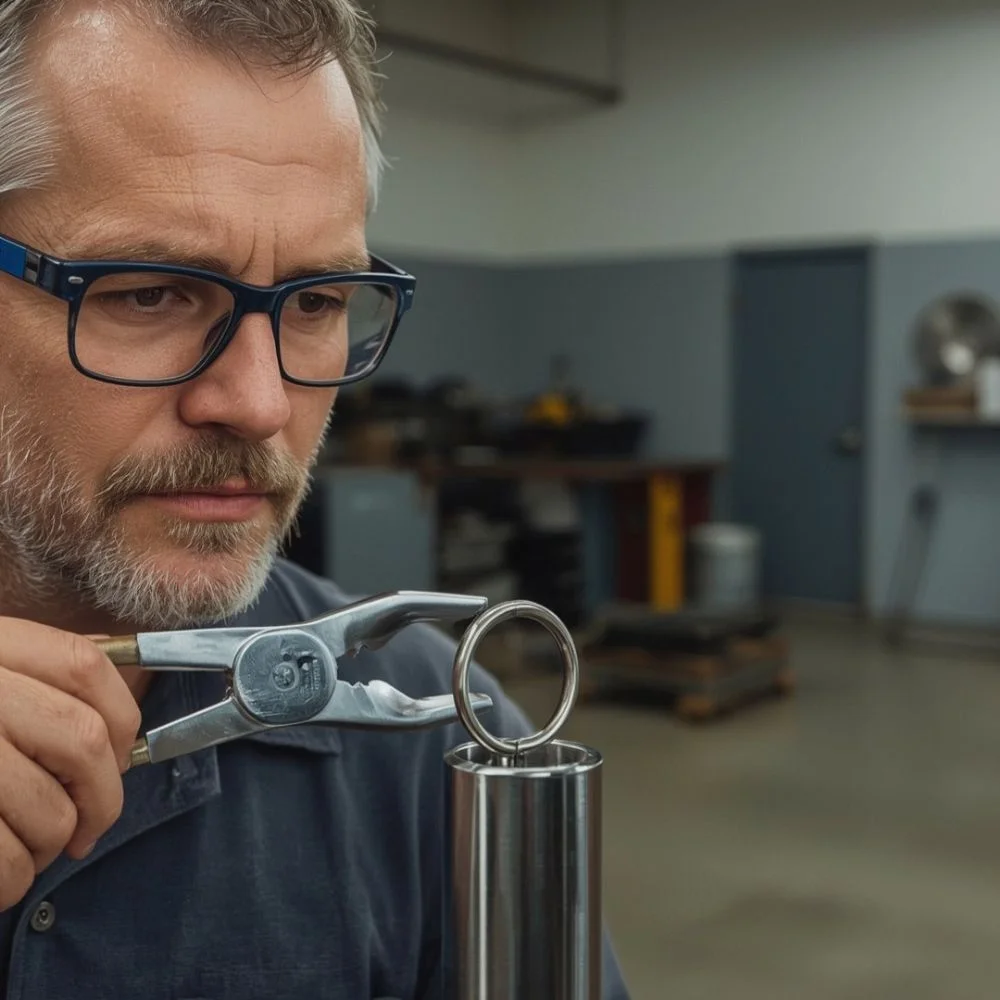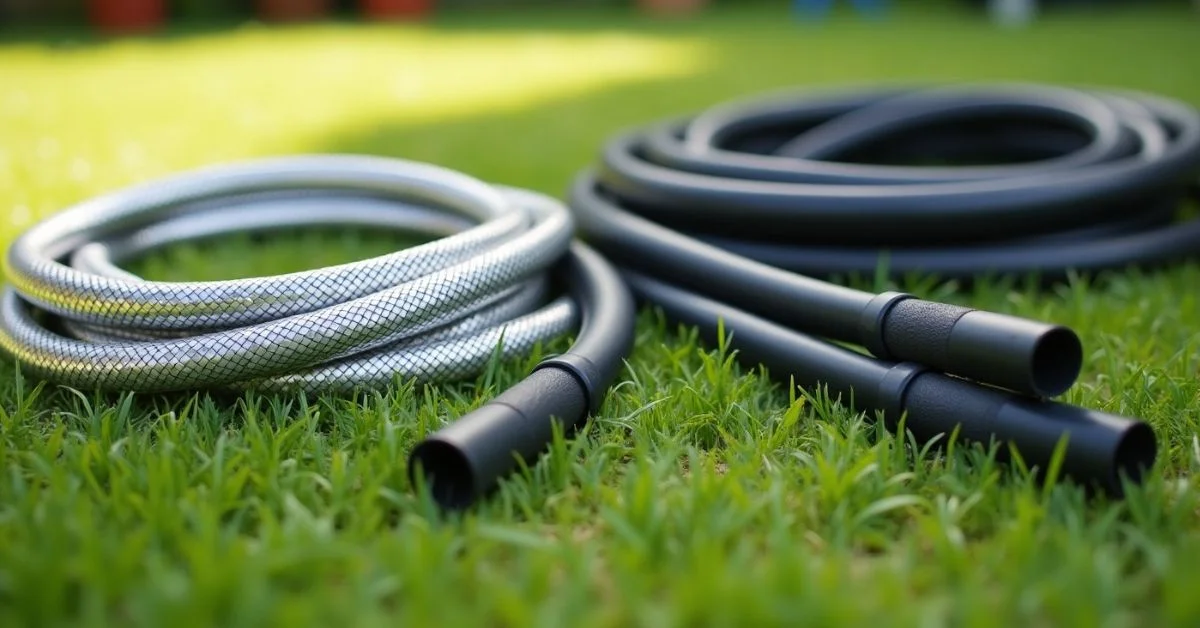Table of Contents
- What Is a Snap Ring and How It Works
- Common Snap Ring Types
- Why Snap Rings Fail Prematurely?
- Signs of a Failing Snap Ring
- Snap Ring Installation Hacks Pros Never Talk About
- Quick Fixes When You Don’t Have the Right Tool
- Choosing the Right Snap Ring for the Job
- Avoiding Size Mismatch Mistakes
- Maintenance Tips Mechanics Swear By
- Where to Buy Reliable Snap Rings Online?
- Conclusion
Snap rings may look like tiny metal loops, but they play a big role in how machines stay together and function properly. Whether you’re a mechanic, DIY enthusiast, or just curious about how things work, understanding snap rings can save you time, prevent breakdowns, and even protect your equipment from major damage. In this guide, you’ll uncover the snap ring secrets mechanics swear by from how to choose the right one to the little mistakes that can cause big problems.
What Is a Snap Ring and How It Works
A snap ring, also known as a circlip or retaining ring, is a round, metal component designed to lock into a groove on a shaft or inside a bore, holding parts securely in place.
Its main job is to hold components like bearings, gears, or pulleys in place, preventing them from sliding or moving out of position. Snap rings are commonly found in engines, gearboxes, electric motors, bicycles, washing machines, and many other mechanical systems. A snap ring is designed to be strong yet flexible. When compressed or expanded, it snaps into a groove and holds parts in place using spring tension.
Common Snap Ring Types
Understanding the types of snap rings available helps you choose the right one for your specific job.
- Internal Snap Rings: Fit into grooves inside a bore. Commonly used in internal housings like cylinder walls or engine casings.
- External Snap Rings: Snap onto grooves on the outside of a shaft. Often used to hold gears or bearings on axles or rods.
- Spiral Snap Rings: Made from a flat coil of metal, they offer a 360-degree grip and are often used in high-speed or high-vibration applications.
- Constant-Section Rings: These rings have a uniform cross-section and are used when strength and simplicity are more important than grip area.
Each type has its place depending on the direction of the load, the space available, and how much the ring needs to flex.
Why Snap Rings Fail Prematurely?
Although snap rings are built to last, they can fail prematurely if misused or installed incorrectly.
- Wrong Snap Ring Size: Using a ring that’s too tight or too loose for the groove leads to slippage or stress breaks.
- Improper Installation: Without the right tools, forcing a snap ring in can bend or stretch it beyond safe limits.
- Material Fatigue: Repeated stress or vibration causes the ring to lose its spring tension and weaken over time.
- Rust and Corrosion: Moisture and chemicals can wear down the metal, especially if the snap ring is made from untreated steel.
- Reusing Old Rings: Once a snap ring has been removed and stretched, reusing it can compromise its shape and strength.
Snap ring failure can lead to catastrophic part displacements in engines or tools. This is why pro mechanics always replace worn or damaged rings immediately.
Signs of a Failing Snap Ring
It’s not always obvious when a snap ring is about to fail. But there are warning signs you should never ignore:
- Clicking or knocking noises during operation
- Loose parts or excessive play in bearings or gears
- Visible deformation or warping in the snap ring
- Vibration or instability in moving parts
If you notice any of these signs, stop and inspect your components before continuing to use.
Snap Ring Installation Hacks Pros Never Talk About
Installing a snap ring correctly might look easy, but doing it the wrong way can ruin the part or even injure you. Pro mechanics have a few smart tricks up their sleeves that make installation safer and smoother.
Snap ring pliers come in two types:
- internal
- external
Each type is designed to either expand or compress the ring safely without over-stretching.
Here are a few pro-approved installation hacks:
- Align the ring properly before inserting. Don’t force it.
- Face the rounded edge outward toward the load; it holds better under pressure.
- Apply even pressure on both tips of the ring using quality pliers.
- Wear safety glasses, as snap rings can fly off unexpectedly if mishandled.
Always double-check that the ring is seated completely in the groove before using the machine. A half-inserted ring can pop out during operation.
Quick Fixes When You Don’t Have the Right Tool
Not every situation is ideal. If you’re in the field or don’t have your snap ring pliers. Here are a few emergency solutions:
- Needle-nose pliers can help compress small rings with care
- Two small flat-head screwdrivers can be used to slide the internal rings
- Paper clips or safety pins (for tiny snap rings) can act as improvised tools if you’re gentle
These workarounds are not long-term solutions, but can save the day in a pinch. Just be sure to replace or reinstall properly as soon as you can.
Choosing the Right Snap Ring for the Job
Picking the correct snap ring is not just about size—it’s about performance and safety. When choosing a ring, always match it to your component’s dimensions and operating conditions.
Consider these key factors:
- Material: Stainless steel for corrosion resistance or beryllium copper for flexibility.
- Load direction: Choose external rings for outward pressure, internal rings for inward loads.
- Space limitations: Spiral rings are better for tighter spaces where traditional pliers can’t reach.
Using the wrong type of ring or the wrong material can result in early failure or poor performance, especially in high-speed or high-heat environments.
Avoiding Size Mismatch Mistakes
Snap ring size mismatches are a common cause of failure. Here’s how to prevent them:
- Always measure the groove diameter before selecting a ring
- Check for standardized codes like DIN 471/472 or ANSI specs
- Use a digital caliper for accurate measurements
- Never guess ring size by visual fit, it’s misleading
Keeping a reference chart or app handy in your toolbox can save you from installing the wrong snap ring and having to take everything apart again.
Maintenance Tips Mechanics Swear By
Like any mechanical part, snap rings need routine attention. Proper care can extend their life and performance dramatically.
- Inspect regularly for signs of wear or deformation
- Lubricate lightly with machine oil to prevent corrosion
- Avoid overloading the system, don’t force parts past their load capacity
- Store rings properly in moisture-free containers or organized kits
Mechanics often keep a full snap ring assortment kit in their workshop, so they always have the right size on hand when needed.
Where to Buy Reliable Snap Rings Online?
Snap rings are available from dozens of hardware stores and online retailers. Choosing the right supplier ensures you get quality parts that meet safety standards.
Trusted suppliers include:
- McMaster-Carr
- Grainger
- Fastenal
- Smalley Steel Ring
- Amazon (for quick delivery kits)
Look for:
- Snap rings with clearly labeled dimensions
- Products made from high-grade steel or stainless steel
- Kits that include installation tools and organized trays
- Vendor ratings and return policies in case of fit issues
Avoid ultra-cheap rings from unknown sellers, they often have poor tolerance control and can crack under pressure.
Conclusion
Before locking that snap ring into place, take a moment to double-check everything. Is the groove clean? Is the size right? Are you using the right tool? Here are a few final reminders from experienced mechanics Don’t reuse bent or stretched snap ringsKeep spares in your toolbox for emergenciesCheck for full seating the ring should click into the groove securelyKnow your load direction so the snap ring holds against the right forceWith these tips in mind, you’ll avoid failures, make smoother repairs, and ensure the safety and performance of every machine you work on.








